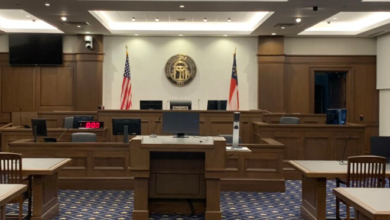What Is Chemerinsky Constitutional Law 6th Edition PDF?

Chemerinsky constitutional law 6th edition PDFis an indispensable guide that sheds light on this intricate field. This updated edition not only builds upon previous insights but also incorporates fresh perspectives and contemporary issues facing our legal system today. If you’re looking to deepen your understanding or simply want a reliable reference, this book is a must-have in your library. Let’s explore what makes it such an essential resource for anyone interested in constitutional law.
About the Author and His Expertise in Constitutional Law
Erwin Chemerinsky is a towering figure in the realm of constitutional law. He serves as the dean of the University of California, Berkeley School of Law and has earned a reputation for his insightful analyses and teaching prowess.
His extensive background includes numerous publications that explore complex legal issues. Chemerinsky’s work often bridges theoretical frameworks with practical implications. This unique perspective enriches his writing, making it accessible to both students and seasoned practitioners.
With decades of experience, he brings depth to discussions on civil rights, federalism, and judicial interpretation. His ability to articulate intricate concepts clearly sets him apart in the field.
Chemerinsky’s influence extends beyond academia; he frequently participates in high-profile cases and offers expert commentary on pressing legal matters. His dedication ensures that readers receive not just knowledge but also inspiration from a true master of constitutional law.
Key Changes and Updates in the 6th Edition
The 6th edition of Chemerinsky’s Constitutional Law brings fresh insights and critical updates. This latest version reflects changes in the legal landscape, responding to recent Supreme Court decisions that have reshaped constitutional interpretation.
Notably, the book emphasizes contemporary issues such as digital privacy rights and their implications for individual freedoms. These discussions are essential in our increasingly connected world.
Updates also include expanded coverage on civil rights movements, showcasing how societal shifts influence constitutional law. The author integrates real-world examples that resonate with current events, making complex doctrines more relatable.
Furthermore, a significant focus is placed on federalism and states’ rights debates. This evolution acknowledges ongoing tensions between state authority and federal oversight amid changing political climates.
Chemerinsky continues to engage readers through clear explanations while challenging them to think critically about these pivotal developments in constitutional jurisprudence.
Overview of Constitutional Law and Its Significance
Constitutional law serves as the backbone of a democratic society. It outlines the framework for government and protects individual rights. This area of law is essential for maintaining order and justice.
At its core, constitutional law defines the powers of different branches of government. It establishes checks and balances that prevent any one branch from becoming too powerful. This system ensures accountability and transparency in governance.
Moreover, it plays a crucial role in safeguarding civil liberties. From freedom of speech to privacy rights, constitutional provisions protect citizens against government overreach.
Understanding constitutional law is vital for every citizen. It empowers individuals to recognize their rights and responsibilities within society, fostering an informed public capable of engaging with legal issues effectively.
In-Depth Analysis of the Major Topics Covered in the Book
The 6th edition of Chemerinsky’s Constitutional Law delves deeply into critical themes that shape the American legal landscape.
Separation of Powers is a cornerstone topic, emphasizing checks and balances among branches of government. This ensures no single entity wields unchecked authority.
Federalism is another essential area explored in detail. It examines the division of power between state and federal governments, highlighting both cooperation and conflict.
Individual Rights and Liberties take center stage as well, focusing on how constitutional protections safeguard personal freedoms against governmental overreach.
Equal Protection remains a vital discussion point, addressing issues related to discrimination and civil rights within various contexts.
Freedom of Speech occupies a pivotal role too. The book navigates complex debates surrounding this fundamental right, offering insights into its boundaries and implications in modern society. Each section encourages critical thinking about how these principles apply today.
A. Separation of Powers
The concept of separation of powers is fundamental to the structure of American government. It ensures that no single branch holds too much authority, leading to a balanced system. The division typically occurs among the executive, legislative, and judicial branches.
Each branch operates independently, yet they also have overlapping responsibilities. This interdependency creates checks and balances that maintain accountability. For instance, Congress makes laws while the President can veto them; courts interpret these laws and ensure they align with constitutional principles.
Chemerinsky’s examination reveals how this framework has evolved over time. Key landmark cases illustrate shifts in power dynamics between branches. Understanding these changes helps grasp contemporary legal debates surrounding executive power or congressional authority.
By studying separation of powers through Chemerinsky’s lens, readers gain insights into its critical role in safeguarding democracy and preserving individual rights against potential governmental overreach.
B. Federalism
Federalism is a cornerstone of the American constitutional framework. It balances power between national and state governments, creating a dynamic interplay that shapes governance.
In Chemerinsky’s 6th edition, federalism takes center stage as it examines this intricate relationship. The text delves into historical contexts and landmark cases that have defined federal authority versus states’ rights.
Key discussions include the Tenth Amendment’s role in preserving state powers and how various Supreme Court rulings have influenced the balance of authority. These legal precedents illustrate evolving interpretations over time.
The book also highlights current debates surrounding issues like healthcare, education, and environmental regulations. Such examples showcase how federalism impacts everyday life for citizens across the nation.
Chemerinsky encourages readers to think critically about these dynamics. Understanding federalism isn’t just for scholars; it’s essential for anyone wishing to grasp America’s complex legal landscape.
C. Individual Rights and Liberties
Individual rights and liberties form the backbone of American democracy. Chemerinsky’s exploration of this topic in his 6th edition delves deep into how these rights are protected under the Constitution.
From freedom of religion to the right to privacy, each aspect is meticulously examined. The author breaks down landmark Supreme Court cases that have shaped our understanding of personal freedoms over time.
What makes this section compelling is its relevance today. Issues like surveillance, free speech on social media, and reproductive rights highlight ongoing debates about individual liberties in modern society.
Chemerinsky also emphasizes the tension between state interests and personal freedoms. This dynamic illustrates why constitutional law remains a living subject, continually evolving with societal values. Each case study serves as a reminder of past struggles for civil rights that inform present-day discussions.
D. Equal Protection
Equal Protection is a cornerstone of constitutional law, embedded in the Fourteenth Amendment. This principle mandates that no state shall deny any person within its jurisdiction the equal protection of the laws.
Chemerinsky’s 6th Edition dives deep into this doctrine, exploring landmark cases and their implications. It discusses how courts have interpreted equality over time, addressing issues such as race, gender, and sexual orientation.
The text highlights significant rulings like Brown v. Board of Education and Obergefell v. Hodges. These decisions illustrate the evolving nature of equal protection rights in American society.
Moreover, Chemerinsky examines contemporary challenges surrounding discrimination claims. The ongoing debates about affirmative action and voter ID laws showcase how relevant these concepts remain today.
Understanding Equal Protection is vital for grasping broader themes within civil rights discussions. The analysis provided by Chemerinsky offers clarity on complex legal precedents shaping our understanding of equality under the law.
E. Freedom of Speech
Freedom of speech is a cornerstone of American democracy, and Chemerinsky’s 6th edition delves into its complexities. This section addresses the importance of protecting free expression while balancing it against societal interests.
The book explores landmark Supreme Court cases that have shaped our understanding of this freedom. From the First Amendment’s guarantees to contemporary issues like hate speech and campaign finance, Chemerinsky provides clarity on how these principles apply today.
He emphasizes the tension between individual rights and community safety. The discussion includes recent trends in censorship and regulation—both online and offline—and their implications for future discourse.
As freedom of speech continues to be tested in various arenas, readers will find valuable insights within this section that resonate with current events. Understanding these dynamics is essential for anyone navigating the landscape of constitutional law or engaged in public debate.
With a comprehensive treatment of such crucial concepts, “Chemerinsky Constitutional Law 6th Edition PDF” serves as an indispensable resource for students, educators, legal professionals, and anyone keen on grasping the intricacies surrounding fundamental freedoms.


